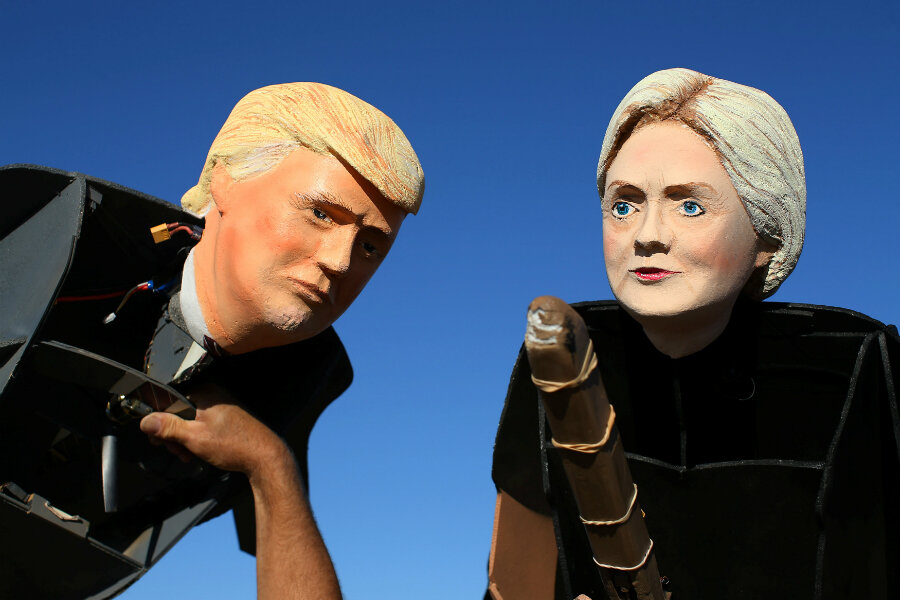Exactly how close is the race between Clinton and Trump?
Loading...
As the campaigns of both major-party presidential candidates home in on states considered key battlegrounds, Republican candidate Donald Trump appears to be creeping closer in the polls.
A predictive model from the political data-analysis website FiveThirtyEight estimated on Wednesday that if the elections were held on that day, Democratic presidential candidate Hillary Clinton stood a 55.1 percent chance of winning, compared to Mr. Trump’s 44.9 percent. The model saw Clinton beating Trump in the popular vote as well as in the electoral college. But it also showed her odds of winning slipping considerably over the past several months, excluding the time period leading up to and following the conventions.
Other projections show a clearer path to the White House for Trump. A Fox News electoral scorecard rated both New Hampshire and Colorado a "toss-up" between the candidates, after earlier scoring them in favor of Clinton. The network also downgraded her lead in Minnesota from "solid" to "lean," and switched Iowa from a "toss-up" to leaning toward Trump.
The competitiveness of the race comes despite a lopsided differential in campaign spending, one that seems to underscore the differences in how Clinton and Trump brand themselves.
The Clinton campaign and the Democratic Party spent $78 million in August, the most expensive month to date, in a traditional campaign built partly on the legacy of President Obama and former President Bill Clinton. And they hope to hit the $1-billion benchmark in spending, mostly on TV ads, reached by the Obama and Romney campaigns in 2012.
"Battleground states carry that name for a reason: They're going to be close, from now until Election Day," wrote Clinton campaign manager Robby Mook in a memo to supporters this week, according to the Associated Press. "But we are going to win them because we've spent the past year building a superior ground game to communicate our message and turn our people out to vote."
By comparison, Trump and his allies dealt out some $47 million in August, with the majority of that coming from the Republican Party. And Trump, who has coasted on a long, slow-cresting wave of free publicity generated by his own endlessly controversial comments and policy prescriptions, has sought to frame his disadvantage in spending in terms of his populist, "radical outsider" bona fides.
"Our expenditures on advertising, our expenditures on people, our expenditures on everything are a tiny fraction. And yet we're minimum tied," Trump said on Tuesday at a rally in North Carolina, according to the AP. "If you can spend less and be winning, that's a positive thing, right?"
One piece of good news for the Clinton campaign on Tuesday came from Florida, a key battleground state where a poll from Monmouth University showed her holding a five-point advantage. Last week, The Christian Science Monitor noted that a recent influx of Puerto Ricans to that state favored the Democratic candidate.
Hundreds of thousands of Puerto Ricans have moved to the US mainland in recent years, many of them driven out by the island’s collapsed economy. Many have settled in Florida, where the Puerto Rican population now rivals that of the traditional hub of New York, comprising 27 percent of all eligible Hispanic voters there. And as the race for the presidency grows closer than ever, some say that the Puerto Rican vote could even be the deciding factor.
“There’s no question that in a swing state like Florida, the mass influx of the past decade is going to play a major role,” says Amílcar Antonio Barreto, an associate professor of political science at Northeastern University and author of several books on Puerto Rican politics.
This report contains material from the Associated Press.






